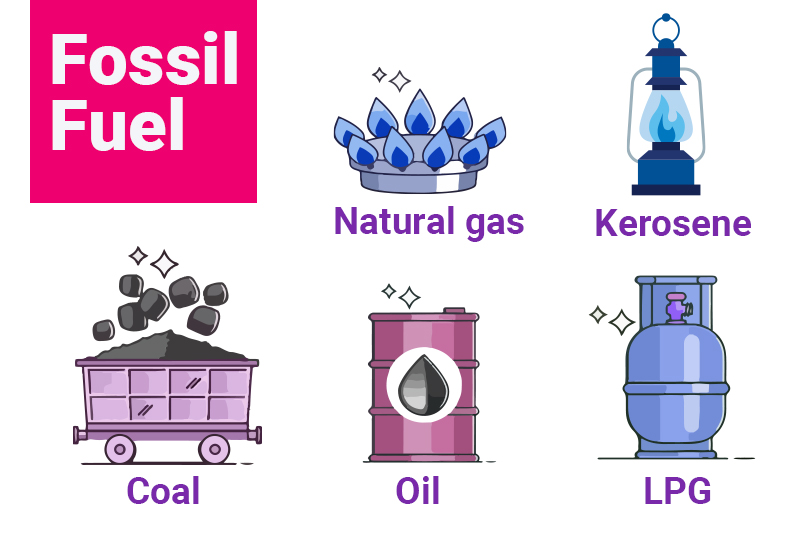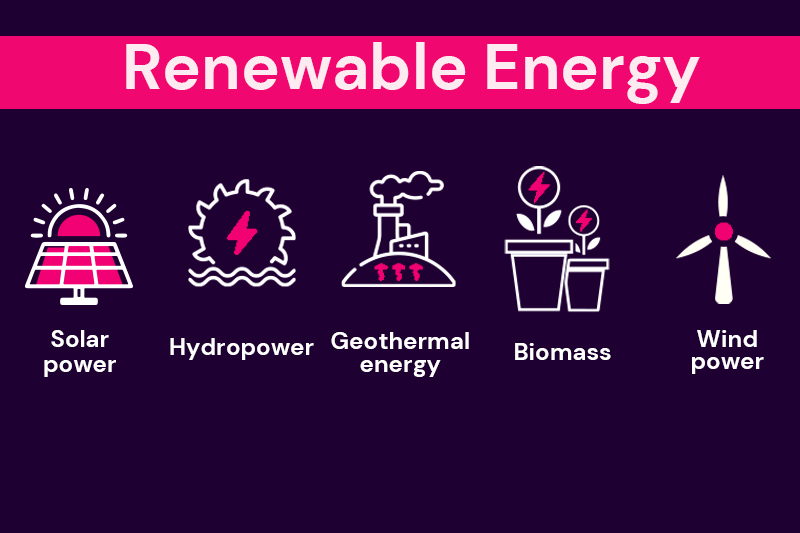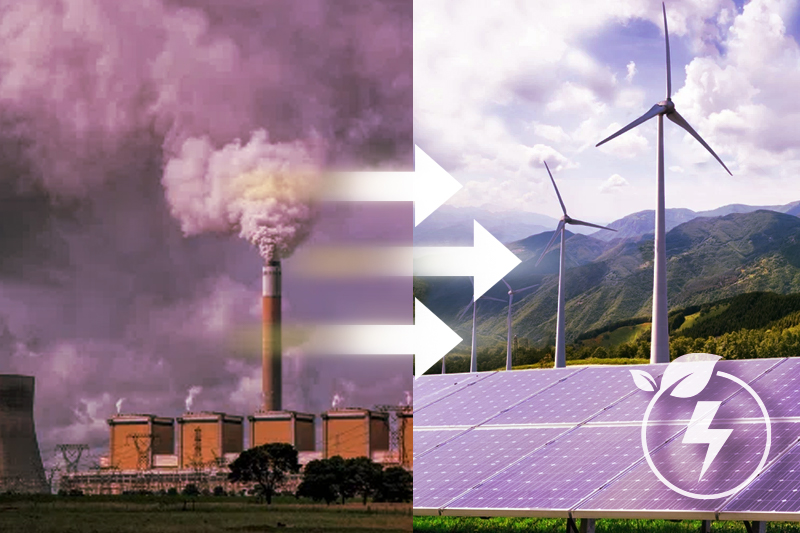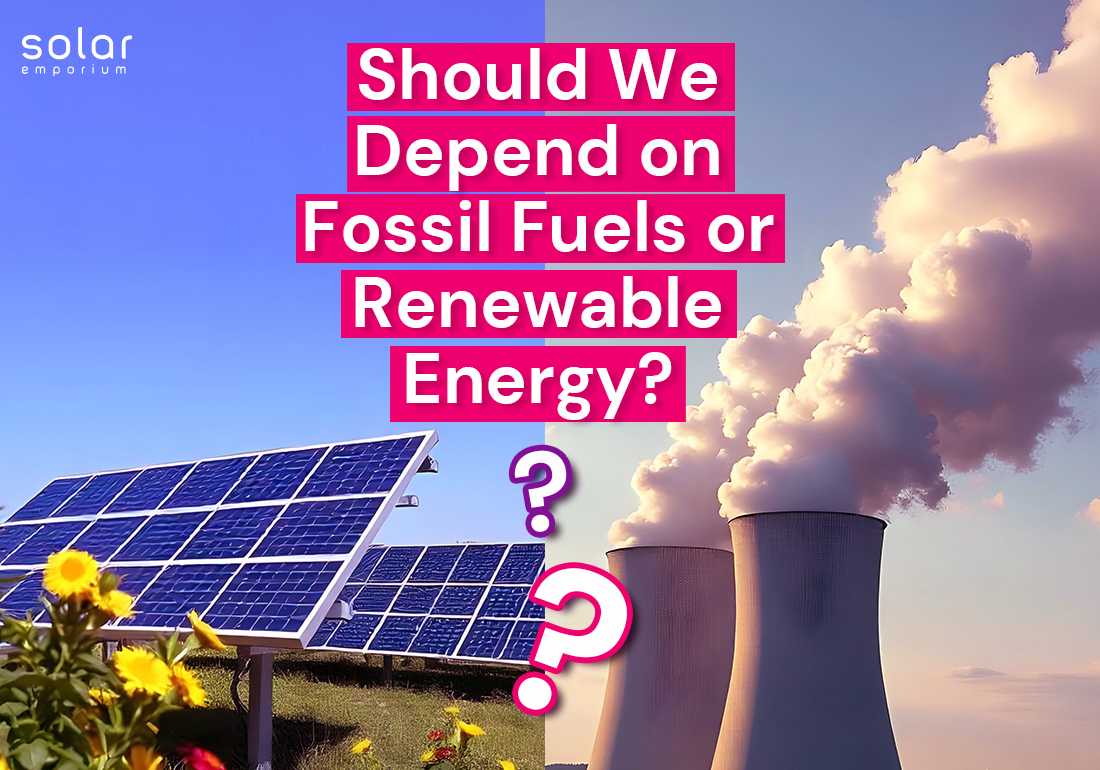Australia has relied on coal, oil, and gas to power its economy for decades. With vast natural resources and a strong history of fossil fuel production, the lion’s share of the country’s energy is generated by burning fossil fuels, specifically coal.
However, the growing urgency to combat climate change has placed renewable energy at the forefront of global discussions, and Australia is not out of it!
It’s evident that solar, wind, and other renewable sources offer a cleaner, more sustainable energy alternative. Yet transitioning from fossil fuels to renewable energy presents several challenges.
But should we continue to depend on fossil fuels or renewable energy?
This question concerns not only the energy supply but also the long-term environmental, economic, and social impact.
In this blog, we’ll break down the questions, compare their features, and provide informative answers that help you choose between fossil fuel and renewable energy.
So, tag along to learn more details!
The Current Energy Landscape in Australia: The Energy Dilemma
Currently, Australia’s energy profile has a diverse mix of renewable and non-renewable sources.
Although the country is still heavily dependent (nearly 55-60% ) on fossil fuels for energy generation, it has also increased its use of renewable energy through several government policies and other effective measures.
According to Australian Energy Regulator (AER) and Clean Energy Council (CEC) data, coal has been the dominant source of electricity generation in Australia, particularly in New South Wales, Queensland, and Victoria.
Other than that, natural gas accounts for 20-25% of Australia’s electricity generation, whereas oil represents a very minor yet impactful share in the transportation sector.
Along with fossil fuels, renewable energy sources such as solar energy and wind also provide approximately 30-35% of Australia’s total energy mix.
However, Australia’s main challenge lies here! How can it balance its heavy dependence on fossil fuels with the urgent need to move toward cleaner, sustainable energy?
This dilemma is further complicated by the country’s vast geography, political interests, and the economic weight of its fossil fuel industry, particularly coal and natural gas.
So, let’s see whether Australia can strike a balance between fossil fuels and renewable energy or if it must make a choice.

Australia’s Heavy Reliance on Fossil Fuels: The Energy Trap
Fossil fuels have formed the backbone of Australia’s energy infrastructure for decades. They provide reliable, uninterrupted, cost-effective energy options to average Australian households.
The country is well known for having some of the largest and most productive coal mines and is recognized as the second-largest global exporter of coal. Australia supplies around 25-30% of the world’s coal exports.
It’s worth noting that the country has rapidly expanded its position in the global liquefied natural gas (LNG) market in recent years and became the largest exporter of LNG in 2020.
So, isn’t it transparent why Australia is slow to move from fossil fuels such as coal to renewable energy? Australia can’t replace fossil fuels easily as they have been deeply embedded in the country’s energy system for a long time.
However, Australia is considered one of the highest per capita carbon emitters globally, and the reason for this is straightforward.
Extensive burning of fossil fuels releases ample amounts of carbon emissions into the atmosphere, resulting in global warming.
These emissions ultimately pollute the air and have detrimental effects on the environment, such as severe floods, frequent bushfires, cyclones, and rising sea levels, thus threatening the entire community.
Wondering how to tackle the planet from these deadly consequences? Just hover to the next part for more details!
Australia’s Green Revolution: A Push for Renewable Energy
While looking for a sustainable solution, and transition away from fossil fuels, Australia has already started to invest more in renewable energy projects.
Driven by environmental concerns and a drop in the cost of clean energy, the collaborative effort of the government, utility companies, and residents has further ignited the shift towards renewable energy.
In recent years, solar power, a trending renewable energy source, has seen a remarkable increase in use due to its clean nature.
Over 3.5 million solar power systems have been installed in Australian homes and small businesses. Thus, 30% of homes now have rooftop solar panels installed, making Australia the world leader in solar adoption rate per capita.
The tide is beginning to turn for Australians, who are embracing renewable energy. With solar, wind, hydro, and geothermal energy and the country’s abundant natural resources, everything is possible.
They produce little to no greenhouse gas emissions while generating energy and reducing our carbon footprint, which makes them key players in the fight against climate change.
Fossil Fuels vs. Renewables: Weighing the Costs and Benefits
The Bright Side of Fossil Fuels: Why We’re Still Hooked
Despite their negative consequences, fossil fuels have several benefits or positive traits that have made them an established energy system in the Australian energy market.
- Firstly, they are reliable and affordable energy sources that can supply electricity 24/7.
- Like renewable energy sources, fossil fuels are not intermittent due to weather conditions. They provide a more consistent baseload power-enhancing energy consumption experience.
- They can be easily transported and supplied globally via pipeline with minimal transportation costs.
- Fossil fuel is an economic option that ensures high energy efficiency for diverse groups of people.
- The fossil fuel industry creates several jobs and generates revenues that can contribute significantly to Australia’s economy, promoting financial growth and stability.
The Dark Side of Fossil Fuels: Environmental Damage and Beyond
While fossil fuels have clear advantages, their environmental impacts are far-reaching. So, here are the hidden costs we pay for using fossil fuels that we can’t ignore:
- The first and foremost disadvantage of fossil fuels is their devastating effects on the environment, including land degradation, water pollution, and loss of biodiversity.
- Carbon dioxide produced from burning fossil fuels such as coal can create health risks and lead to several respiratory diseases in the long run. This can be an additional burden on the Australian healthcare system.
- Limited resource availability is another drawback of using fossil fuels. They cannot be replenished like renewable resources, so running out of resources raises concerns about future energy security.
- As fossil fuels drive the Australian energy industry, the cost of transitioning to a renewable energy system may require a significant amount of time with economic and social adjustments.
The Renewable Energy Edge: A Greener, Smarter Future for Australia

Navigating the Pros and Cons of Renewable Sources
Advantages of Renewable Energy
Renewable energy sources such as wind, solar, and hydroelectric power do not emit greenhouse gases during energy generation.
This makes them a cleaner and more sustainable option for reducing Australia’s carbon footprint and combating climate change. They are also abundant in nature and replenish at a faster rate, so there is no risk of resource scarcity.
Due to environmental concerns, Australia’s renewable energy sector is growing rapidly. This not only ensures a safe, eco-friendly planet but also provides opportunities for new jobs and businesses.
Moreover, by embracing renewable sources, Australians could reduce their dependency on imported fuels, ensuring greater energy security and stability.
As solar, wind, and hydroelectric power are locally sourced renewable energy, they could also reduce vulnerability to global price fluctuations and supply disruptions.
Disadvantages of Renewable Energy
The main challenges of renewable energy are its intermittency and high upfront cost. For example, installing solar panels and setting up solar farms or wind turbines can require a significant investment, which can be burdensome for low-income households.
Also, there are storage challenges as intermittent sources like wind and solar produce energy, so they are not always available.
Even though battery technology has improved, developing cost-effective storage solutions still remains a challenge for solar battery brands.
Fossil Fuels or Renewables: Which Path Should We Choose?
After knowing all the details, the question remains: Should we depend on fossil fuels, or should we fully embrace renewable energy?
Well, the answer is not entirely clear-cut, as both energy sources have their own set of strengths and weaknesses. So, the ideal path may lie in a combination of fossil fuels and renewable energy.
Instead of completely eliminating fossil fuels, Australia could continue to minimize its use for power generation. Meanwhile, the residents could escalate investments in renewables during peak demand, enhancing long-term sustainability.
Overall, the aim should be to ensure that the energy transition is fair and equitable, allowing communities to adapt without significant disruptions or challenges.
Fossil Fuels in a Renewable World: Can We Have Both?
While fossil fuels have been a crucial part of the Australian economy, their long-term environmental, economic, and social effects are too great to ignore.
On the other hand, renewable energy offers a cleaner, more sustainable future for Australia, but its full potential can only be realized with significant investment in infrastructure, technology, and policy reform.
So what to do? Can renewable energy and fossil fuels be used together?
Yes, we can! In fact, a balanced, diversified energy mix, one that combines the reliability of fossil fuels with the sustainability of renewable energy, can overcome the challenges of intermittent power generation.
However, a hybrid energy system could be best for the planet, its ecosystem, and the population. It ensures energy security while reducing carbon emissions.

What Will Australia’s Energy Mix Look Like in 2050?
Looking ahead to 2050, Australia’s energy landscape is likely to be dominated by renewables, with fossil fuels playing a diminishing role.
Are you wondering why?
Recently, the world has been grappling with climate change issues. As a result, people are becoming overly concerned about environmental effects and focusing on more sustainable lifestyles.
The good news is that the Australian government released a renewable energy target that aims to achieve net zero emissions by 2050 while reducing greenhouse gas emissions by 43% below 2005 levels by 2030.
As part of Australia’s broader efforts to meet climate goals and Paris Agreement commitments, the government also announced that by 2030, around 82 percent of the country’s electricity supply will be sourced from renewable energy.
The target focuses on expanding the country’s renewable energy generation mix, which includes sources like solar, wind, and hydro.
Therefore, by investing in renewable energy, improving energy storage, and transitioning gradually, Australia can secure a greener, smarter, and more sustainable future.
Concluding Thoughts
When we consider the future of energy, whether it’s fossil fuels or renewable energy, the choices we make will define the sustainability, security, and health of our planet.
Both energy sources have shaped our world differently, but the times are changing. The energy decisions we make today will affect not only our planet’s health but also generations to come.
By embracing renewable energy resources and using less fossil fuels, we can unlock a cleaner, brighter, and more sustainable world for all.
So, the choice is yours. Choose wisely and join the energy revolution in order to create a safer future.
For any of your solar-related queries or energy solutions, contact Solar Emporium and win a free solar quote.







